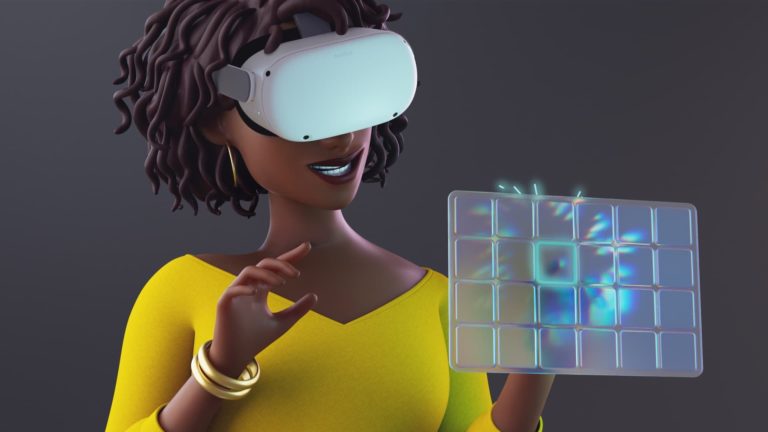
VR has made great strides in the field of education recently, offering exciting new opportunities for students to learn and grow. By providing a more immersive experience, VR can help students of all levels improve their educational performance and achieve their full potential. It has many uses in education to enhance students’ engagement and motivation by allowing them to visualize and experience complex concepts and scenarios in a simulated environment, making abstract topics more accessible and concrete.
How Students Can Use VR Technology to Improve Educational Performance
Though similar to augmented reality, VR is different because you can explore a world created by a computer by donning headgear. Below are some ways VR technology provides students with unique opportunities to learn and grow academically.
1. Teach Abstract Topics
For young and primary school students, VR can bring educational concepts to life, making it easier for them to understand abstract topics. For example, they can visit virtual museums and historic sites and explore the human body’s inner workings in a way that would be impossible in the real world. By providing a hands-on and engaging experience, VR can increase students’ interest in learning and improve their retention of important information.
2. Enhance Problem-Solving
In secondary school, instructors can use VR technology to enhance students’ problem-solving and critical-thinking skills. They can participate in simulations and role-playing exercises to work through real-world scenarios, improving their decision-making and collaboration abilities. VR can also help them prepare for high-stakes exams by providing interactive practice exams and quizzes that allow students to identify their areas of weakness and receive immediate feedback.
3. Simplify Complex Subjects
For higher education students, VR offers a unique opportunity to dive deep into complex subjects and gain hands-on experience in their field of study. Medical students can practice surgeries in a safe and controlled environment, while engineering students can build and test prototypes in a virtual workspace. By providing students with a safe and low-risk environment to experiment and learn, VR can help them develop practical skills and prepare for the real world.
4. Eliminate Learning Difficulties
Teachers can conduct the course much more conventionally in an immersive classroom. While still able to gaze around and explore the virtual environment, the pupils can comfortably learn without feeling confined. In addition, children with special needs could benefit greatly from VR technology by replicating what they learned in a remote environment in the physical world.
Importance of Using VR for Learning
One thing you must do when signing up for a higher education program is research the available courses. If VR is a teaching mode in your chosen class, it can change your comprehensive abilities. Below are a few reasons why using VR to study is worthwhile.
1. Enhances Engagement and Motivation
VR offers a new way to explore subjects and environments that are not easily accessible. This can improve engagement and motivation, as you can experience things you otherwise would not have. For example, you can take virtual field trips to historical sites or explore complex scientific concepts in a 3D environment.
2. Improves Retention and Comprehension
VR provides a more interactive experience that allows you to retain information better. Studies have shown students learn faster when they have active and hands-on experience rather than passively listening or reading about a subject.
3. Offers a Safe and Controlled Environment
Due to its virtual nature, VR can offer a safe and comfortable environment for students to practice skills and experience simulations. This is especially important for higher education students considering a course in medicine. They can easily practice procedures in a virtual environment without the risk of harming a patient.
4. Is Accessible
Virtual reality makes learning accessible to people with disabilities or those in remote areas by allowing them to explore and experience learning more efficiently and in different ways. Regardless of location or physical abilities, VR can bring education to everyone.
5. Promotes Peer Interaction
With VR technology, you can participate in virtual environments that simulate real-world scenarios, allowing you to collaborate and communicate with your peers more dynamically. VR-enhanced peer interaction in educational settings can help you develop a deeper sense of empathy and promote lifelong learning.
Use VR for School and Home Learning
VR technology has the potential to revolutionize the way students learn and improve their educational performance. By providing an immersive and interactive learning experience, VR can help learners of all levels understand abstract concepts, enhance their critical thinking and problem-solving skills, and prepare for the real world. However, it’s essential to remember VR is just a tool and its effectiveness will depend on the quality of the educational content and the way it integrates into the curriculum.
 Devin Partida is Editor-in-Chief at ReHack Magazine and editorial contributor at AR Insider. See her work here and follow her @rehackmagazine.
Devin Partida is Editor-in-Chief at ReHack Magazine and editorial contributor at AR Insider. See her work here and follow her @rehackmagazine.






